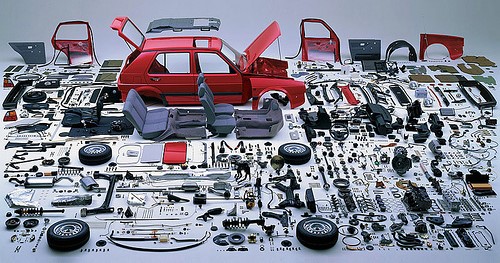
Almost every car owner has had their monthly budget messed up because their car unexpectedly needed some repairs. Let’s face it, car repairs are mostly borderline exorbitant and most car owners have no choice but to find ways to cut corners while still keeping their car in running condition.
One of the most popular ways to do this is purchasing aftermarket parts. Let’s begin by understanding what aftermarket car parts are and how they are different from their original counterparts.
Aftermarket Parts v/s OEM Parts
OEM (Original Equipment Manufacturer) parts are the parts that you find at dealerships. These parts are manufactured by the same company that manufactured your car. OEM parts usually cost a small fortune and in many cases, aren’t readily available.
Aftermarket car parts are manufactured by third party companies. These are usually much more pocket friendly than their OEM counterparts. Moreover, since any third party can manufacture aftermarket parts, buyers have the option of picking from a large variety of different manufacturers. Most custom car owners choose quality aftermarket products for their car show projects.
While the lower cost of aftermarket parts is certainly a noteworthy advantage of purchasing them, there are a number of other advantages associated with aftermarket parts.
Some of these are:
More Variety
OEM parts are produced by a single manufacturer. This allows the manufacturer to control the availability and price of OEM parts.
However, when a car owner shops for aftermarket parts, they discover that the aftermarket car parts industry is highly competitive. A number of manufacturers are offering the same part at different prices and with different warranty conditions associated.
Thanks to this, buyers have the freedom of choosing a part that fits their budget and offers the kind of functionality and durability that they think justifies the price of the part.
Easy Availability
Since the OEM parts are produced by a single manufacturer, they are produced in limited numbers. As a result, there may be instances where the part you require is not available at the dealership. Moreover, if you drive an old vehicle that has been discontinued, finding available OEM parts can be especially difficult.
This problem is virtually eliminated when a buyer chooses to shop for aftermarket parts. If, for instance, you shop for an aftermarket tail light, you can find a number of local mechanics and online stores that have the product readily available. Similarly, finding aftermarket parts for car models that have been discontinued is much easier and more pocket friendly than finding OEM parts.
Availability Of Potentially Better Quality Parts
If a car owner is willing to spend as much on an aftermarket part as they would on an OEM part, there is a good chance that they will be able to purchase a part that is better than the OEM version.
Such aftermarket parts, usually labelled as ‘performance’ parts, are usually more durable and designed for better performance output than OEM parts.
This effectively means that an aftermarket part that costs as much as an OEM part will probably outlast and outperform the OEM part.
Conclusion
As you can see, the benefits associated with aftermarket car parts are simply too great to ignore. However, in order to enjoy these benefits, buyers are required to spend time researching the brands and sellers that they choose.
As competitive as the aftermarket car parts industry is, there are also a lot of scammers and sellers with poor quality parts looking to scam uninformed sellers. To save yourself from a bad experience while buying aftermarket car parts, it pays to remember that you get what you pay for.










